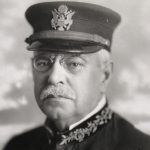
John Philip Sousa – The Stars and Stripes Forever
The Stars and Stripes Forever, composed by John Philip Sousa, is one of the most iconic and celebrated marches in American history.
Its bold, spirited melody stirs patriotic pride and continues to energize parades, ceremonies, and celebrations across the United States and beyond.
Overview of the Piece
Sousa composed The Stars and Stripes Forever in 1896 after being inspired during a European trip.
In 1987, the United States Congress officially designated it as the National March of the United States, underscoring its cultural and historical significance.
Originally written for the Sousa Band, the piece quickly gained widespread recognition and became an essential part of American musical heritage.
Musical Characteristics
The piece follows the traditional march structure, written in a clear and energetic 2/4 time.
It opens with a bold introduction, followed by a bright and memorable main theme, building steadily toward a triumphant climax.
The most famous section is the trio, where the piccolo plays a soaring counter-melody above the rest of the band.
This iconic moment is a highlight in the world of marching band repertoire and often draws enthusiastic applause from audiences.
Historical Background and Reception
John Philip Sousa, often called “The March King,” composed over a hundred marches, including other classics like The Washington Post March and Semper Fidelis.
Yet The Stars and Stripes Forever remains his crowning achievement.
It is traditionally performed on Independence Day (July 4th), Veterans Day, and at many national events and sports games.
Interestingly, it has also been used as an unofficial signal in theaters and circuses to indicate emergencies and evacuations—a testament to its cultural ubiquity.
Conclusion
The Stars and Stripes Forever is more than just a march; it is a rousing musical symbol of American identity and unity.
With its uplifting rhythm and brilliant orchestration, it continues to inspire pride and celebration more than 120 years after its debut.
Whether you're hearing it in a concert hall or at a community parade, Sousa's masterpiece remains as powerful and exhilarating as ever.
More than 100 million songs in CD quality. 7 million in better-than-CD sound.
🎧 Start your free trial with Amazon Music Unlimited now!


